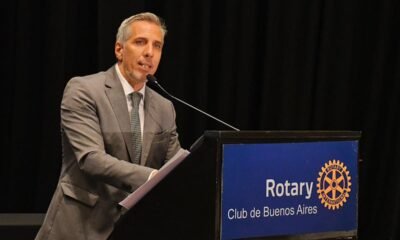INTERNACIONAL
Polesello: el artista de la forma y la luz que creó un mundo de pureza por fuera de la reflexión

El concepto de “más aquí”, formulado por Marta Traba en 1978, define la singularidad de Rogelio Polesello: una obra que, según la crítica, “no suscita ninguna pregunta, no produce expectativa y, por lo tanto, ninguna angustia, y crea un espectador que es en simultáneo productor, actividad que lo aleja de los lugares más predecibles del arte: de la contemplación a la reflexión”.
Esta idea, que da título a la exposición Más aquí. Polesello 1970–2000, se materializa en la nueva muestra antológica que el Centro Cultural Borges dedica al artista, en el marco del décimo aniversario de su muerte.
La exhibición reúne así más de 150 obras creadas entre 1970 y 2000, tres décadas decisivas en su trayectoria. El recorrido incluye acrílicos tallados, monocopias, pinturas, obras sobre papel y piezas inéditas, todas ellas testimonio de su incesante exploración de la percepción, la luz, el color y la forma.
El visitante se enfrenta a una experiencia visual inmersiva, donde el juego óptico, la precisión técnica y el espíritu lúdico invitan a mirar y mirarse de otra manera. La selección abarca obras de la colección de Naná Gallardo, material de archivo del propio artista y piezas de colecciones privadas de toda Argentina.
El texto curatorial de Santiago Villanueva subraya que la obra de Polesello (Buenos Aires, 1939-2014) es una presencia “no sólo indiscutible, sino también incómoda y generadora de nuevas preguntas” desde los años sesenta hasta la actualidad.
La muestra se centra en el período que comienza en 1970, cuando la proyección internacional del artista, especialmente en Venezuela, se intensifica, y concluye en el año 2000. En estas tres décadas, la selección de obras y materiales revela el carácter experimental, de prueba y error, y una abstracción que se aleja de los programas rígidos para difuminarse entre el diseño, la decoración, la publicidad, el muralismo y la manualidad.

Desde sus inicios, Polesello experimentó con materiales industriales como el acrílico, desafiando los procesos tradicionales de la obra de arte. Esta actitud lo convirtió en objeto de debates en los años sesenta, desde el ensayo fundamental de Oscar Masotta en 1965 hasta la gran exposición en el Instituto Di Tella en 1969, organizada por Jorge Romero Brest.
Masotta observó en él una manera inédita de trabajar, desde su vestimenta hasta los materiales y la escenificación de su práctica. Según el crítico, Polesello “elimina algo del gesto, y se pregunta por el modo en el que estas superficies ‘anónimas’ pueden ser un modo de integrar el arte con la vida social”.
Masotta lo describió como alguien que, vestido con overol y soplete en mano, “parece un obrero metalúrgico, pero que no lo es”. Esa apariencia, sostiene, es la superficie donde se sostiene la estructura de pensamiento de la obra de Polesello.

El “más aquí” de Polesello implica, según Traba, una eficacia y resolución de la imagen que salta los pasos impuestos por generaciones anteriores de artistas-intelectuales al arte no figurativo. Ese “más” representa tanto el exceso como el acortamiento de distancias, la disolución y la pérdida de rigidez, estableciendo un contacto “no comprometido”.
En la obra de Polesello, el tiempo suspendido es también proceso: la referencia se diluye y la relación con el contexto se vuelve menos utilitaria y literal. Al acercarse el fin de siglo, esa proximidad se transforma en una aceleración hacia la pérdida de un sentido vanguardista de la imagen y una reorientación hacia la magia.
Figura central del arte óptico y cinético en América Latina, Polesello transitó el diseño, la pintura, la escultura y la gráfica. Integrante del grupo Arte Nuevo y exponente del Op Art internacional, desarrolló una estética propia basada en la distorsión visual, la geometría y el movimiento.

Desde joven, se destacó por su búsqueda de movimiento en lo estático y por articular de manera innovadora las relaciones entre arte, diseño, industria y arquitectura. Su experimentación con materiales —en especial el acrílico— le otorgó una impronta distintiva. La combinación de orden y azar, junto con la audacia cromática, marcó toda su producción y dejó una huella inconfundible en el arte argentino.
Comenzó a trabajar en una agencia de publicidad a los quince años. Se formó en la Escuela Nacional de Bellas Artes Manuel Belgrano y se graduó en la Escuela Nacional de Bellas Artes Prilidiano Pueyrredón en 1958. Durante su educación, descubrió la obra de Paul Klee, que influyó notablemente en su trabajo, y recibió enseñanzas de su padre, constructor, lo que inspiró la incorporación de materiales y métodos de construcción en sus obras.
El artista recorrió diversas vertientes del abstraccionismo geométrico: su obra combina formas geométricas y efectos ópticos de color para generar la ilusión de movimiento. Sus primeras esculturas, de los años cincuenta, exploran el efecto de la luz en los objetos. Traspasó los límites de la pintura tradicional con el mural Eclipse en el Aeropuerto Internacional de Ezeiza (Buenos Aires, 2001) y con intervenciones en automóviles, edificios y cuerpos humanos.

Participó en numerosas bienales y su obra integra colecciones nacionales e internacionales, incluyendo el MOMA, el Guggenheim de Nueva York, el Museo Nacional de Bellas Artes, el Moderno y el MACBA. Dentro de la comunidad artística, era conocido como “Pole”.
Expuso en la 3ª Bienal de París en 1963, la 8ª Bienal de San Pablo en 1965, la muestra Plástica con Plásticos en el Museo Nacional de Bellas Artes en 1966, el Instituto Torcuato Di Tella en 1967 y 1968, el Center for Inter-American Relations de Nueva York en 1968, el Museo Nacional de Bellas Artes en 2000, el Centro Cultural Recoleta en 2005 y nuevamente en el Bellas Artes en 2012. En 2003, recibió el Gran Premio de Honor del Fondo Nacional de las Artes. Y ahora se puede disfrutar en el Borges.
*“Más aquí. Polesello 1970–2000″ hasta el 21 de diciembre, en el Centro Cultural Borges, Viamonte 525, CABA. De Miércoles a domingos, de 14 a 21 h. Entrada gratuita
Fotos: Cortesía Secretaria de Cultura
INTERNACIONAL
Trump’s beef import plan ignores key issue squeezing American cattle ranchers

NEWYou can now listen to Fox News articles!
While President Donald Trump’s proposal to import more beef from Argentina is billed by the administration as a way to bring down prices for American consumers, critics say it misses the real issue driving costs at the grocery store: corporate concentration in the U.S. meatpacking industry.
Four corporations — Tyson, JBS, Cargill and National Beef — anchor the U.S. beef supply chain, with pricing power that reaches from pasture to plate. As a result, the gap between what producers are paid for cattle and what consumers spend on beef has remained wide, a reflection, economists say, of how market power is distributed along the supply chain.
Fox News Digital reached out to all four companies for comment but did not receive a response as of publication.
TRUMP ADMIN EYES ARGENTINE BEEF IMPORTS AS DOMESTIC PRICES SOAR TO RECORD HIGHS
Some critics argue the real problem isn’t about supply, it’s the corporate giants controlling America’s meat industry. (Melina Mara/The Washington Post/Getty Images)
The frustration extends beyond farm country – Rep. Thomas Massie, R-Ky., says the dominance of multinational meatpackers is hurting both producers and consumers.
«Four corporations control 85% of the meat sold in the United States. One of these corporations is Chinese-owned and one is Brazilian-owned. American farmers are being squeezed and American consumers are being gouged,» Massie told Fox News Digital.
Massie, who raises cattle on his Kentucky ranch, warned that expanding beef imports from Argentina would only worsen those structural problems.
«Flooding the market with Argentinian beef is not the answer to these problems. An America First solution to rising beef prices is to pass my PRIME Act, which would empower American farmers to sell directly to consumers without interference from global corporate middlemen,» Massie said.
Under current federal law, beef processed at small, state-inspected facilities can’t be sold across state lines, even if it meets the same health standards as federally inspected meat. Massie’s PRIME Act would remove that barrier, a change supporters say would let local ranchers reach more consumers and compete with the big packers.
GOP LAWMAKERS WARN TRUMP’S ARGENTINA BEEF PROPOSAL COULD RATTLE US RANCHERS
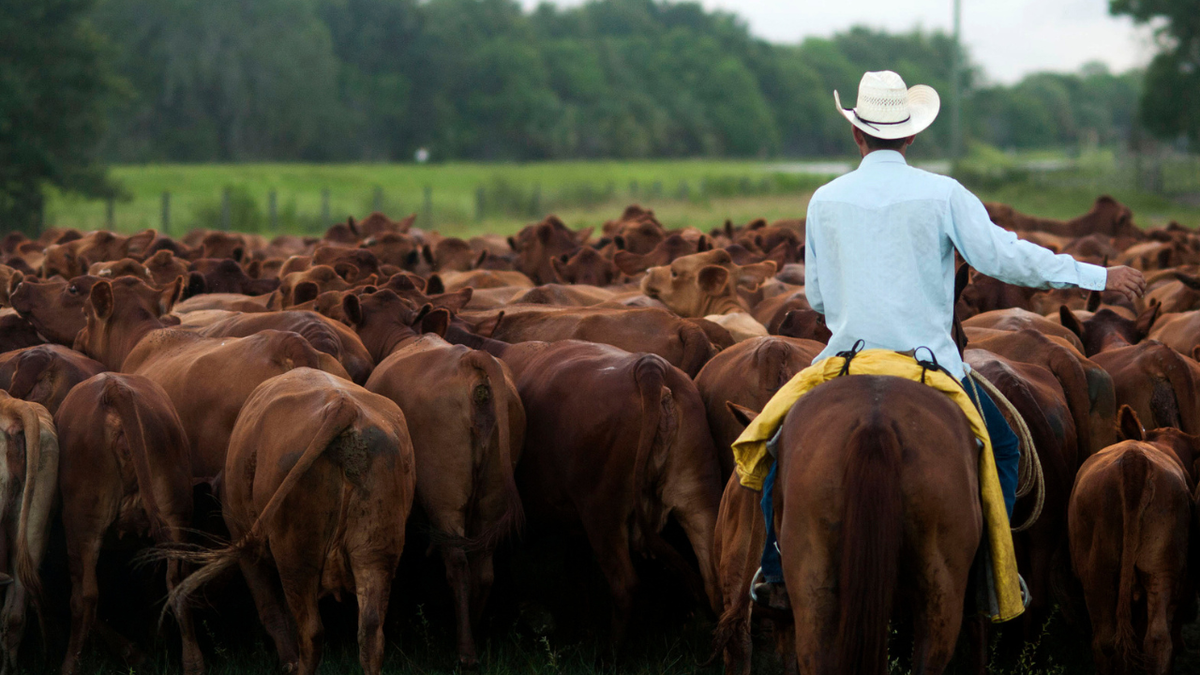
Agriculture Secretary Brooke Rollins recently unveiled a plan aimed at strengthening the U.S. cattle industry. (Ty Wright/Bloomberg/Getty Images)
Economists agree the beef market is highly consolidated, but say the forces shaping prices go well beyond any one trade deal.
Glynn Tonsor, a professor of agricultural economics at Kansas State University, told Fox News Digital that strong consumer demand continues to drive beef prices higher, regardless of supply fluctuations.
«There’s nothing that forces me or you or anybody else when we go into the grocery store to pay more for beef. People are choosing to,» he said. «The consumer desire for beef is strong and, regardless of the supply-side situation, that has the effect of pulling prices up.»
He also noted that the large-scale structure of the U.S. meatpacking industry, often criticized by ranchers and lawmakers, has economic benefits for consumers.
«I would argue that those economies of scale benefit consumers,» Tonsor said. «The ability to operate at a cheaper cost per head and, ultimately, per pound produced gives us the ability to offer beef and every other item we’re talking about at a cheaper price. Anything we do that loses those economies of scale actually hurts consumers in the form of higher prices.»
FROM CATTLE TO CRUDE: HOW TRUMP’S TARIFFS ARE RATTLING THE LONE STAR STATE
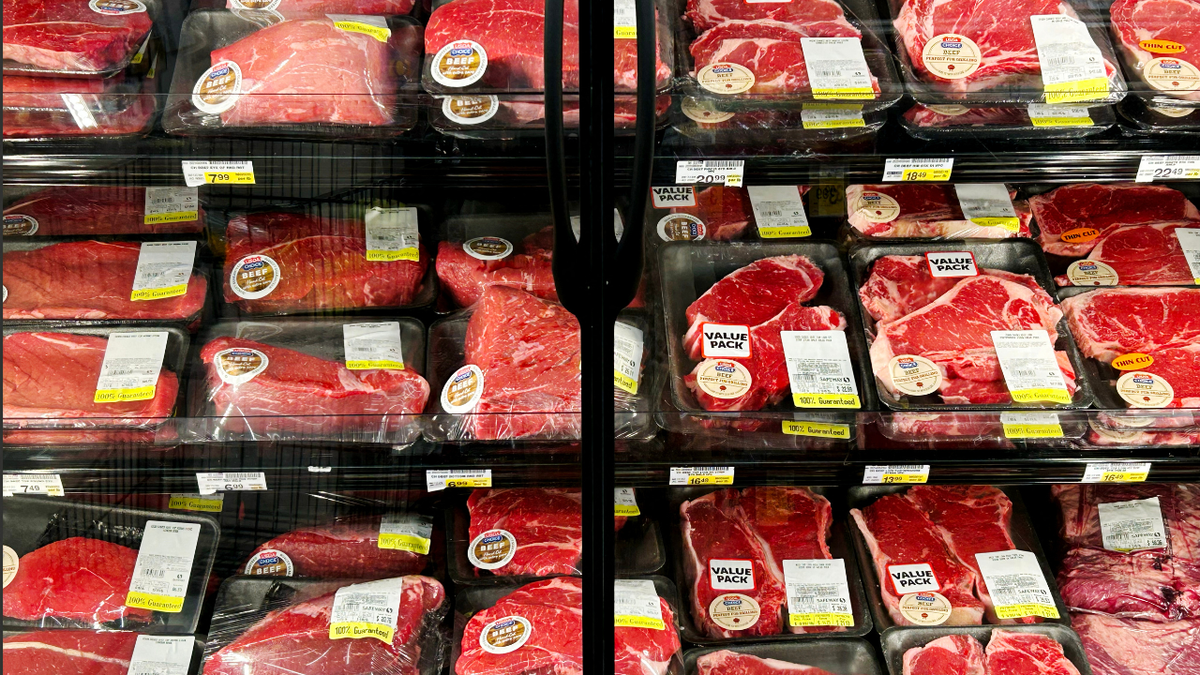
The White House has previously said that importing beef will help address the rising food costs in the U.S. (Jim Watson/AFP/Getty Images)
Derrell Peel, a professor of agricultural economics at Oklahoma State University, said that even if U.S. imports from Argentina increase, the impact on overall prices would be negligible.
«Most of what we import is lean, processed beef trimmings used for ground beef,» said Peel, who specializes in livestock marketing. «We’re not talking about the kind of beef that affects steak prices. Even if we doubled imports, it would be such a small share of the total supply that we wouldn’t detect any real impact.»
Peel added that there’s no quick way to ease pressure on cattle prices, since it takes roughly two years to bring animals to market and several years to rebuild herds.
«The fact of the matter is there’s really nothing anybody can do to change this very quickly,» he said. «We’re in a tight supply situation that took several years to develop, and it’ll take several years to get out of it.»
BEEF PRICES HIT RECORD HIGHS AS NATIONWIDE CATTLE INVENTORY DROPS TO LOWEST LEVEL IN 70 YEARS

Economists say there’s no quick way to ease pressure on cattle prices or beef. (Ricky Carioti/The Washington Post/Getty Images)
CLICK HERE TO GET THE FOX NEWS APP
Meanwhile, the White House defended the plan, saying it’s aimed at balancing relief for consumers with long-term support for U.S. cattle producers.
«The president loves our ranchers, and he also loves American consumers, and he wants to do right by both,» White House press secretary Karoline Leavitt said on Wednesday.
Leavitt said Trump’s immediate goal is to lower beef prices by increasing supply through additional imports, while a separate, long-term plan will focus on strengthening the domestic cattle industry.
She pointed to a three-part plan announced by Agriculture Secretary Brooke Rollins, which includes expanding grazing access, easing regulations for new ranchers, cutting inspection costs and improving «Product of USA» labeling to ensure consumers know when they’re buying American-made beef.
trade,texas,finance global economy,south america,white house,republicans elections
INTERNACIONAL
Una mujer estuvo cinco años secuestrada en un garaje por una pareja: le daban papilla con detergente y le vaciaron la cuenta
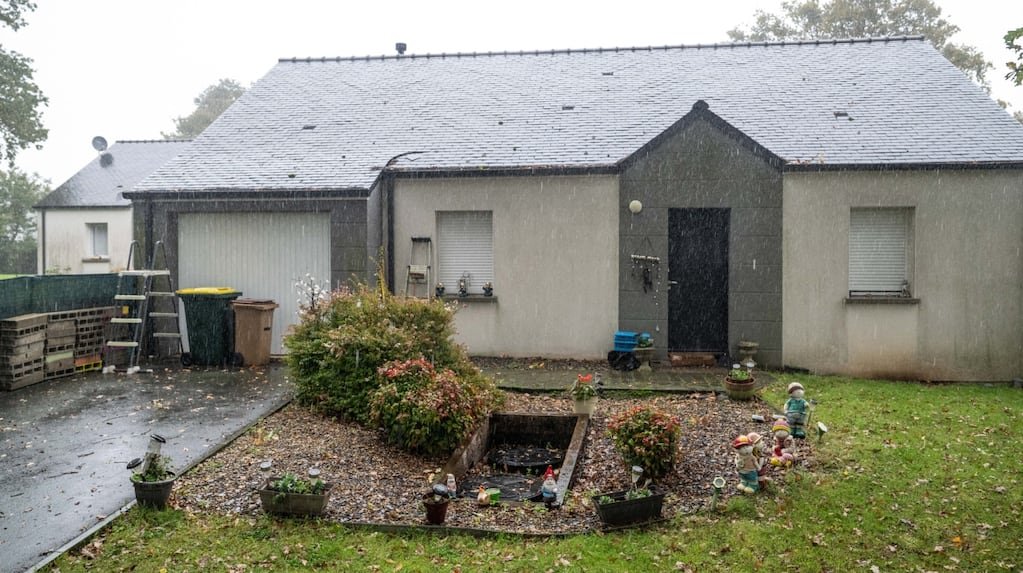
Una mujer de unos 40 años estuvo secuestrada durante cinco años por su propia compañera de casa y la pareja de esta, quienes la sometieron a torturas y la despojaron de todos sus bienes. El caso estremecedor ocurrió en la tranquila localidad de Saint-Molf, un pueblito de apenas 2800 habitantes del oeste de Francia, que quedó conmocionado.
El calvario terminó el 14 de octubre, cuando la víctima logró escapar y pedir ayuda a los vecinos. El caso salió a la luz y la Fiscalía de Nantes imputó a la pareja por “secuestro con tortura”.
Leé también: Horror en Brasil: un hombre mató a su exnovia trans a golpes y pisotones en la cabeza
Cinco años de encierro y maltratos
Todo comenzó cuando la víctima compartía la casa con una mujer de unos 60 años, que trabajaba como auxiliar de enfermería en un hospital. La situación cambió cuando la mujer llevó a vivir a su pareja, un hombre de 82 años. Desde ese momento, la víctima fue aislada, encerrada y despojada de su dinero y ayudas sociales.
Según el relato de la propia víctima, primero la obligaron a vivir en una carpa en el jardín y, más tarde, la encerraron en el garage. “Dormía en una reposera, hacía sus necesidades en un balde y bolsas de plástico, y comía papilla mezclada con detergente”, detalló el fiscal de Nantes, Antoine Leroy.
A la víctima le vaciaron la cuenta. (Foto: AFP/Sébastien Salom-Gomis).
Durante años, la mujer soportó el frío, la lluvia y el hambre, y solo en contadas ocasiones pudo salir al exterior. Desde 2022, no hubo más rastros de su vida: sus cuentas bancarias quedaron vacías y los últimos movimientos fueron transferencias a la cuenta de la acusada, informó la radio France Bleu.
Leé también: Una mujer irá a la cárcel por la muerte de su bebé: lo dejó solo con un pitbull peligroso que lo mató
La fuga desesperada y el rescate
La pesadilla terminó la noche del 14 de octubre, después de la cena. La víctima aprovechó que el hombre miraba televisión para salir del encierro y tocar timbre a los vecinos hasta que uno le abriera la puerta.
Cuando la policía llegó, encontraron a una mujer extremadamente delgada, con casi 50 kilos menos, en estado de hipotermia y con signos de haber sido drogada y mal alimentada. Detras de los inocentes muñecos de jardín, el horror. (Foto: captura de video AFP).
“La bañaban con lavandina, le ponían detergente en la comida y la drogaban con remedios”, reveló una fuente cercana a la investigación. En la casa, los gendarmes hallaron pruebas contundentes: la puerta del garage bloqueada desde afuera con bloques de cemento.
La mujer fue hospitalizada y el médico que la atendió le prescribió al menos 30 días de incapacidad total de trabajo por las secuelas físicas y psicológicas.
El silencio del pueblo y la investigación en marcha
El caso dejó muchas preguntas sin respuesta. ¿Cómo pudo pasar desapercibido tanto tiempo? El intendente de Saint-Molf, Hubert Delorme, aseguró que no conocía a los habitantes de la casa, aunque admitió que la prefectura lo había alertado porque la inquilina no pagaba el alquiler desde hacía un año y medio y estaba bajo proceso de desalojo.
“Parecía un hombre amable”
En el pueblo, la conmoción es total: “Me enteré a la mañana. Pasó justo al lado de casa, no has escuchado nada, no viste, eso es todo… Es realmente impactante. Vivimos muy cerca y pensar que esto ha ocurrido justo al lado es muy sorprendente. Estamos conmocionados. Creo que nos llevará unos días asimilarlo” dijo una vecina en shock a la agencia de noticias AFP.
Leé también: Condenaron a un dentista que ofrecía blanqueamiento dental gratis a influencers para atraerlas y abusarlas
Otra vecina dijo que el secuestrador, de 82 años, “solía estar en el jardín” y “parecía muy amable”. “Era alguien ameno, hablaba con facilidad”, sostuvo. Detrás de los adornos, un calvario de cinco años. (Foto: captura de video AFP).
El polo criminal de Nantes tomó el caso y la investigación sigue abierta. El fiscal Antoine Leroy confirmó que el matrimonio reconoció las condiciones en las que vivía la víctima, aunque minimizó su responsabilidad.
Ambos fueron imputados por “secuestro con tortura o actos de barbarie” cometidos entre abril de 2022 y el 14 de octubre de 2025, además de “abuso fraudulento del estado de sujeción psicológica o física” y “abuso de debilidad de persona vulnerable” desde 2018.
La mujer acusada quedó detenida y su pareja, bajo control judicial. Podrían ser condenados a cadena perpetua Mientras tanto, la comunidad de Saint-Molf intenta asimilar el horror vivido puertas adentro de una casa común y corriente. “Estamos sorprendidos, acá nunca pasa nada”, dijo otro vecino jubilado.
Francia, tortura, secuestro
INTERNACIONAL
Reporter’s Notebook: A Paris jewel heist straight out of the movies
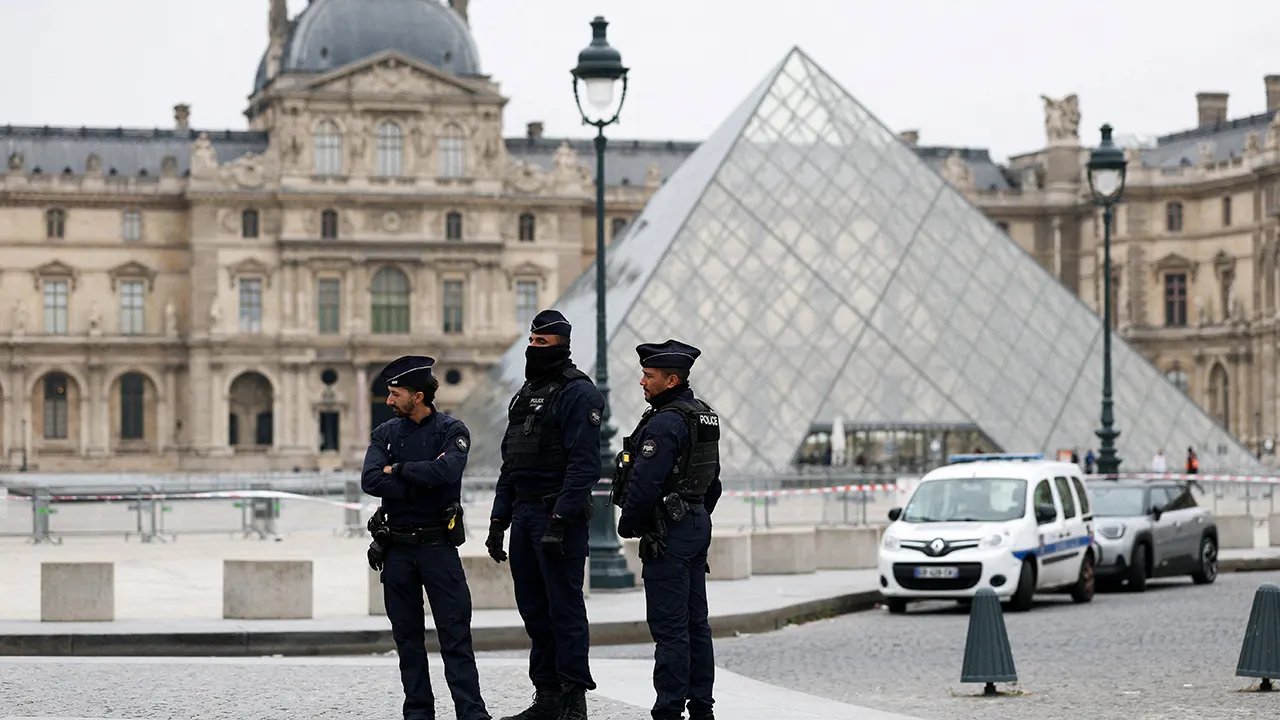
NEWYou can now listen to Fox News articles!
Sometimes you get assigned stories that are different enough to make even veteran journalists raise their eyebrows. Sunday’s jewel heist at the Louvre in Paris is definitely one of them.
Four guys, using a cherry picker truck to scale the side of the museum, break through a second-floor window, scoop up to $100 million worth of French crown jewelry, and make off with the loot on motor scooters in under 10 minutes. Something out of the movies. Pink Panther. You name it.
I used to live in Paris. I’ve covered many front-page stories during my time there and after — from the death of Princess Diana to several deadly terror attacks, and the fire at Notre Dame Cathedral. Now, this.
‘BRAZEN’ LOUVRE THIEVES MADE TARGETED HEIST, JEWELS COULD BE MELTED DOWN: EXPERT
Fox News senior foreign affairs correspondent Greg Palkot reports live in front of the Louvre Museum entrance in Paris on Oct. 21, 2025. (Fox News)
Luckily, I had an ace team with me: professional cameraman and producer John Templeton and Simon Owen, seasoned Paris producer since the 1990s, Cicely Medintzeff, and a handy big Mercedes van and driver
The trip didn’t start that well — losing a few production bags on the flight from London to Paris. But cameraman John made do. As we chatted with folks at the airport, including a nice American couple from Washington state. The robbery was already the talk of the town.
Our next challenge was finding a spot to do our live shots. Arriving by night, the road near the museum was blocked by police on one side, so we ended up backing our way in on the other side. We found a place in front of the iconic pyramid-shaped entrance to the museum. Night or day, it’s one of the great backdrops around — as we talked about a terrible crime.
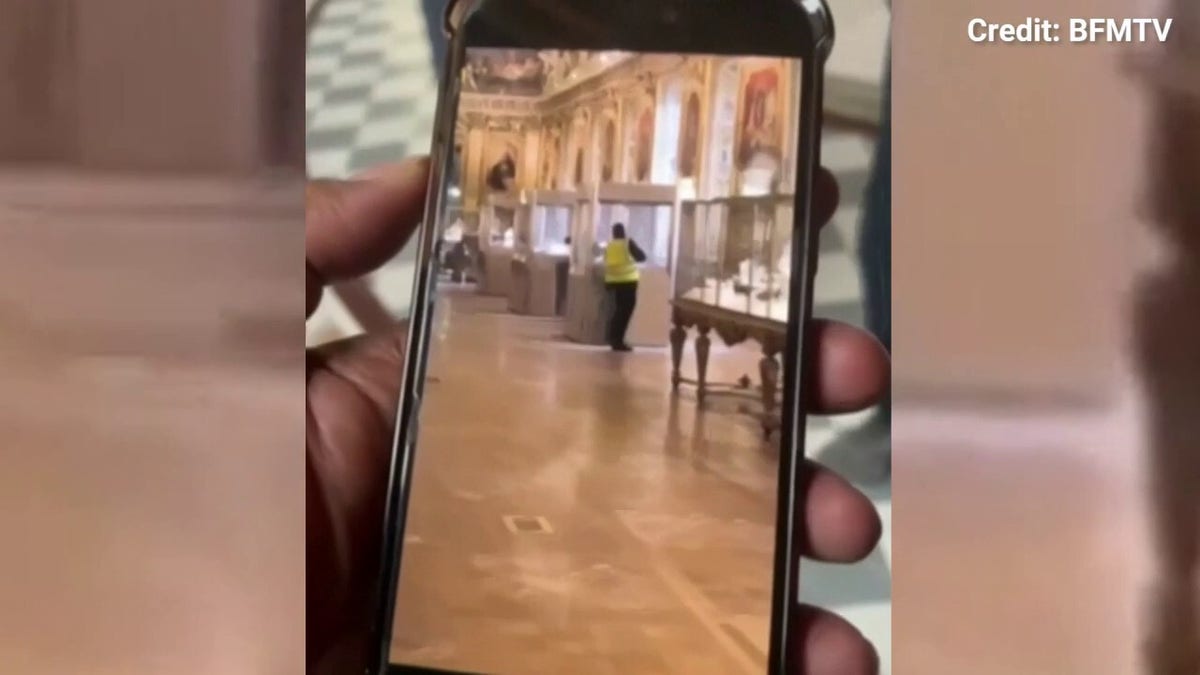
New footage purportedly shows a person in a yellow jacket beside a display case amid the Louvre heist. (BFMTV)
The next morning, we went straight to the scene of the crime — the back side of the museum. We saw the narrow sidewalk where the thieves parked their truck, the flimsy window they cut through, and a piece of wood now covering the gap. Except for a parked police car, even at that time, there wasn’t a lot of security around. There was no museum video of the break-in. The crooks beat the alarms.
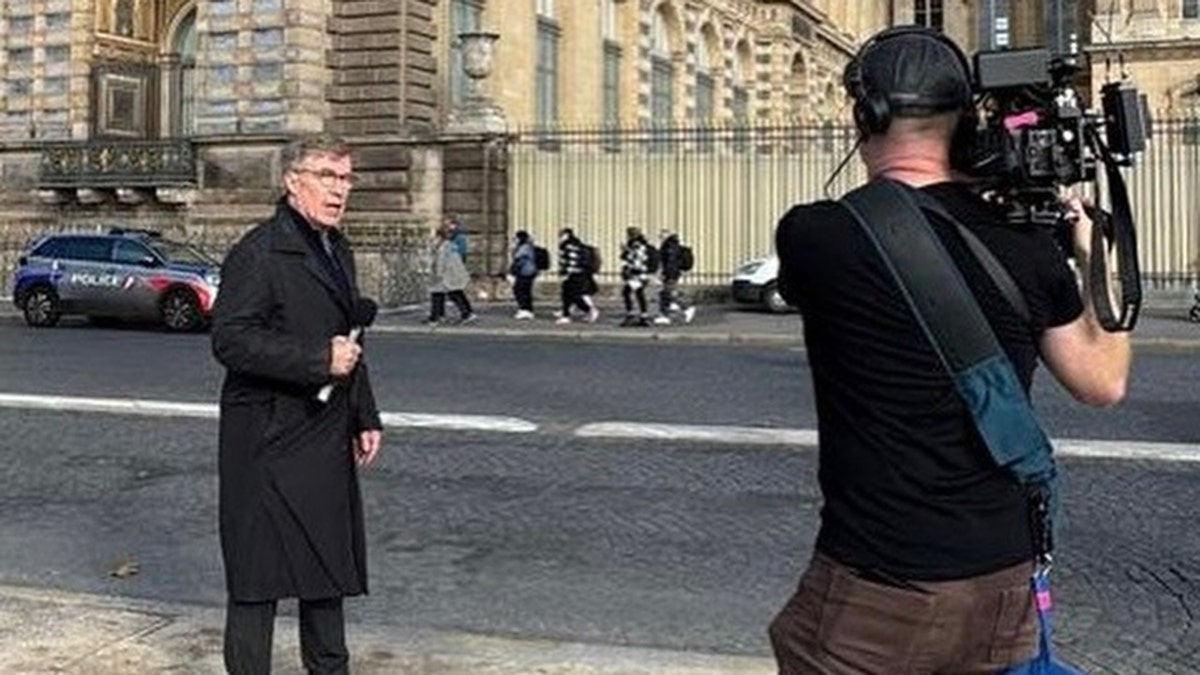
Fox News senior foreign affairs correspondent Greg Palkot stands outside the Louvre Museum, where a break-in occurred, in Paris on Oct. 21, 2025. (Fox News)
LOUVRE MUSEUM CLOSED AFTER ROBBERY, FRENCH OFFICIAL SAYS
We weren’t the only ones gawking. A small crowd, including American tourists, stared up and wondered. «It looks incredibly easy,» one told us. «Weird,» another sighed.
But the big crowds were back in front of the museum. Even though it was closed that day (it had been shut following the robbery), throngs were there — many wondering about the crime. Many more just taking the usual Instagram-style selfies with the Louvre.
With our TV equipment spread on the pavement for live shots, we became another source of attention. «Where did it happen?» one person asked. «When is the museum opening again?» asked another. One more American tourist came up and described how he and his wife had been to the museum the day before the robbery and could already tell the security was terrible.
LOUVRE DIRECTOR GRILLED ON SPECTACULAR SECURITY FAILURES, INCLUDING CAMERA POINTING AWAY FROM KEY BALCONY
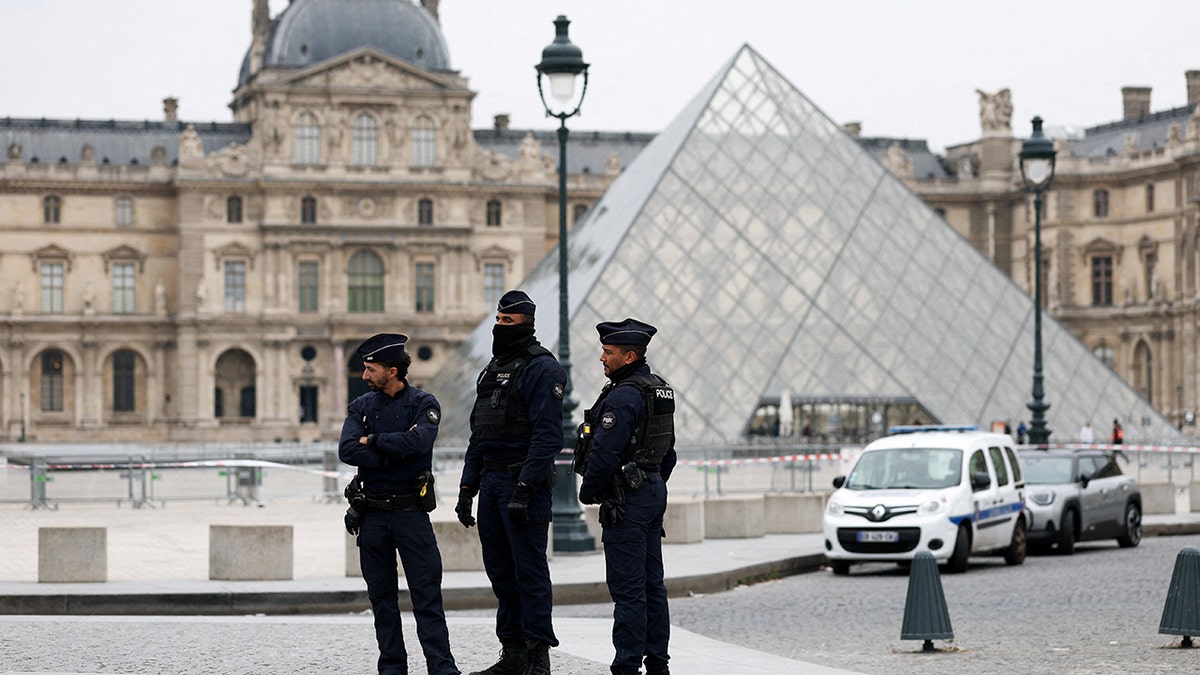
Police officers stand near the pyramid of the Louvre museum after reports of a robbery, in Paris, France, October 19, 2025. REUTERS/Gonzalo Fuentes TPX IMAGES OF THE DAY (Gonzalo Fuentes/Reuters)
As more details of the crime emerged, the story only got stranger. How the thieves picked up their truck just 25 miles outside Paris. How were they in such a rush they left behind a crown studded with more than 1,300 diamonds (they got eight other pieces). And how Police — making up for lost time — gathered evidence, including a construction-style vest, a glove, a license plate and video of the suspects making their getaway on a highway outside Paris.
And the French were doing another thing they’re good at — finger-pointing and blame-casting. President Emmanuel Macron has enough political headaches these days. The last thing he needed was a high-profile catastrophe. He promised the culprits would be caught. To her credit, the director of the museum offered her resignation (it was declined) but got a good grilling by the French Senate.
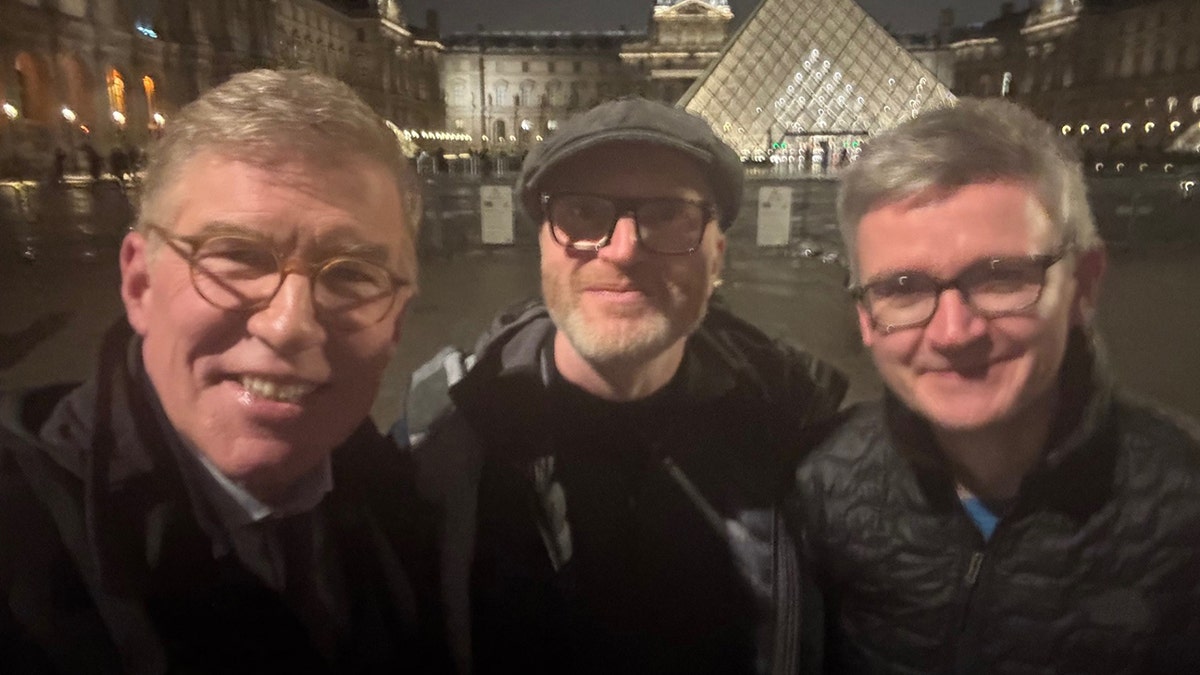
Fox News team, from left, Greg Palkot, cameraman John Templeton and producer Simon Owen, at the Louvre in Paris on Oct. 21, 2025. (Fox News)
All of this, as we noted, was a race against time for a team of 100 French police investigators — one of the biggest manhunts in French history — to catch the thieves before they had a chance to break up the jewelry, re-cut the gems and melt down the gold and silver to be sold off. Part of a growing trend of museum heists.
CLICK HERE TO DOWNLOAD THE FOX NEWS APP
In addition to hearing my on-air colleagues express their astonishment about the crime, we also took our share of ribbing about the «tough» assignment of being sent to Paris. And, indeed, it was lovely seeing my old hometown again. Paris is stunning. But I also must note, aside from a fine brasserie wrap dinner, the trip was more about crowding onto café chairs to write scripts and use facilities — plus Uber Eats, French style.
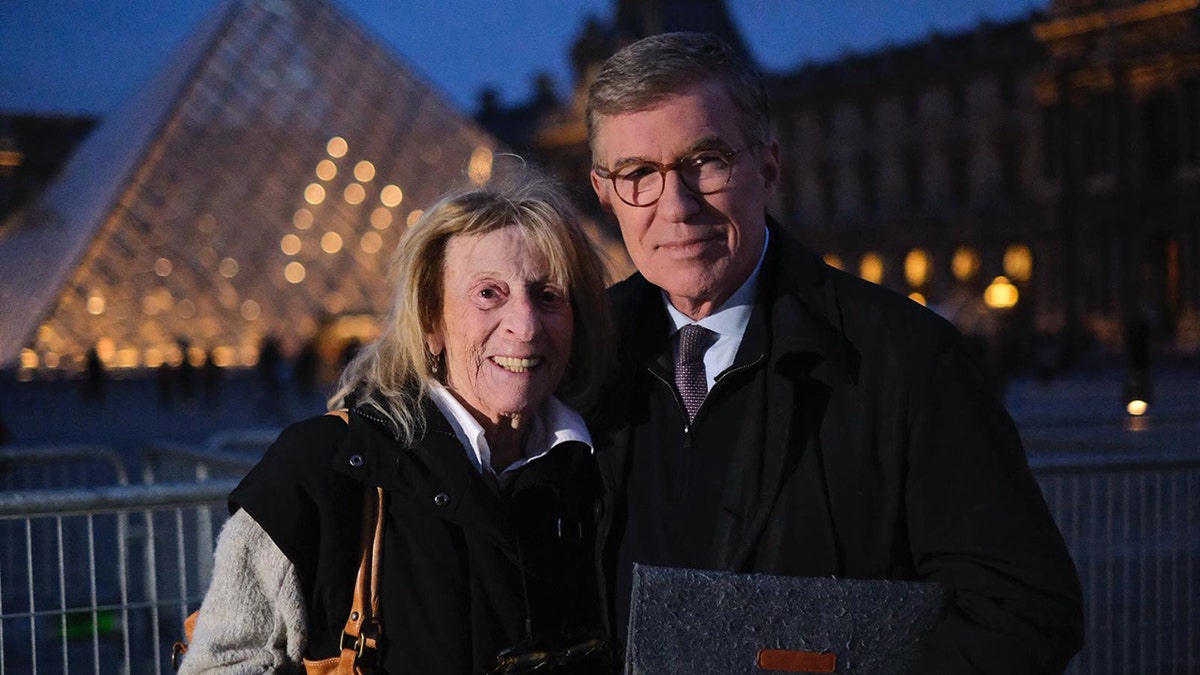
Fox News senior foreign affairs correspondent Greg Palkot with Paris producer Cicely Medintzeff at the Louvre in Paris on Oct. 21, 2025. (Fox News)
So now we wait to see how this incredible French crime caper pans out. Most people we heard from were pretty sure the bandits would get caught and the museum’s security would be updated. But they had their doubts that the priceless jewelry — described as France’s «soul» — would ever be retrieved. The Louvre has reopened. Let’s just hope this film-style story has a happy ending.
france,crime,europe,emmanuel macron

 DEPORTE2 días ago
DEPORTE2 días agoUniversidad de Chile vs. Lanús, por la Copa Sudamericana: día, horario y cómo verlo por TV

 CHIMENTOS2 días ago
CHIMENTOS2 días agoAdabel Guerrero confesó de qué famosa está enamorada y que le encantaría tener relaciones: «La China Suárez me sorprendió con su belleza»

 POLITICA2 días ago
POLITICA2 días agoDiego Luciani, sobre la condena a Cristina Kirchner: “No hay sentencia ejemplar sin recuperar lo robado”













